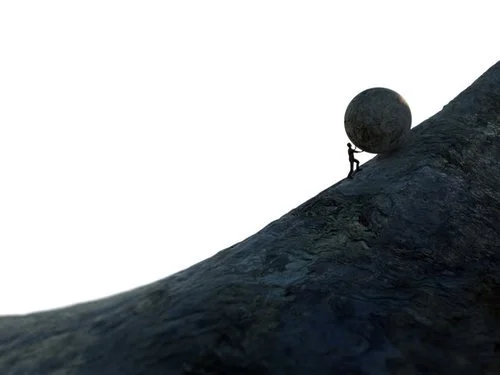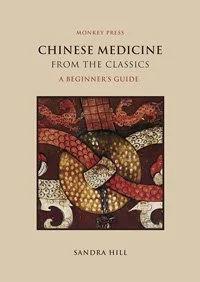How to Authentically Root your Work in the Classics
My poor email inbox receives a steady flow of sincere requests for feedback on writings on Chinese medicine from students, members of my two mentorships, or colleagues. These people tend to share their work with me because they want to make sure that it is not just creative, entertaining, and clinically useful, but also grounded authentically in the classics. And that is of course a concern that I endorse wholeheartedly. So how can we all maximize the chances that our understanding of Chinese medicine is an accurate transmission of the traditional Chinese perspective, especially those of us who are not fluent in classical Chinese?
In reading those emails, and the attached writings, from my colleagues, there is a common issue that I tend to run across. And luckily, there is also a resource that I recommend to address this issue, which is what motivated me to write this blog. Rather than repeating the same information in email after email, I am spelling it out now so that I can refer future readers here, or better yet, help them from the start so that they avoid this issue in the first place.
Do you already know what issue I am talking about? Far too often, I read contemporary presentations of Chinese medicine, whether it be theory or practical advice, that aim to be authentic but strike me as “off.” Usually unintentionally and unconsciously, such writings expresses a way of thinking, of diagnosing, or of treating that still reflects the dominant biomedical paradigm and Western worldview. While the profession of Chinese medicine has been evolving quickly in terms of “classically” oriented publications and courses available in Western languages, the vast majority of practitioners and students, at least in the US and Europe, still lack a deep and comprehensive understanding of classical theory and practice, no matter how much lip service colleges and publications pay to this aspect.
Obviously, none of us are blank slates that live in a vacuum. All of us are affected by the culture that we live and practice and sleep and eat and love in. As any anthropologist will tell you, it is impossible to be human and to produce human knowledge that is not affected by our environment. I can cite my own teachings on Sun Simiao’s gynecology as a clear example of that: Yes, I have an agenda, but at least I am outspoken about it. I believe that traditional Chinese gynecology has some wonderful gems to contribute to the care of women. In this way, it can counterbalance what I consider the misogynistic bend of our currently dominant biomedical paradigm. To make this point, I emphasize not the patriarchal and misogynistic aspects of traditional Chinese culture in my teaching (since I see those as already over-represented in our popular Orientalizing stereotypes) but share Chinese cultural expressions with my students that challenge those stereotypes, from statues of voluptuous women playing polo or going hunting to statements in medical texts that emphasize the significance of women’s health.
So yes, whether we like it or not, each of us is influenced by our contemporary culture, and none of us are able to present classical Chinese medicine and culture with complete objectivity. And if we did, our teaching would be deadly boring so you wouldn’t absorb it anyway. That kind of work lives in the ivory tower!
The most charismatic teachers in our field are indeed those who are able to make the classics their own, who can bring the classics to life in their personal and professional work. And in that process, it is easy to get carried away by our creativity, as we aim to balance authentic transmission with our personal voice. The more we allow our creativity to flow into our writing or teaching, the more juicy and appealing it tends to be. Walking this fine line is like dancing on a tightrope: exhilarating and risky and deeply inspiring to anybody watching from below. And yet, when we are dealing with medical information, there is a real, serious need for clarity and honesty, for differentiating between what is transmission of traditional knowledge and what is the teacher’s or author’s personal contribution. And to do that, we creators of content first have to become firmly rooted in the traditional knowledge ourselves. While more and more Chinese medical texts are becoming available in acceptable English translations, the basic problem remains:
How many clinical practitioners have the necessary background education in traditional Chinese philosophy, cosmology, religion, language, history, and material culture, to properly contextualize the medical writings?
And even within a single text, how many practitioners can actually stomach to read through a huge canon like the Sùwèn and Língshū (“Plain Questions” and “Magic Pivot,” the two parts of the Yellow Emperor’s Inner Classic), make sense of it, and process the flood of footnotes or discussions required to understand this difficult text?
How many of you are thoroughly familiar with Gé Hóng or the Nànjīng, for example?
A recent lecture I gave on the Nànjīng reminded me once again of what a wonderful resource that text is, and how woefully underutilized it is in our current CM discourse. I know that I don’t have all these texts “mastered” (whatever that may mean), and I cannot think a single non-Chinese practitioner who does. I have spent enough time with old Chinese doctor-teachers in the tradition of the “scholar-physicians” 儒醫, to know how vast the gulf is between their proficiency in this material and my own and those of my Western colleagues. In my case, at least I can quickly consult my original sources and pick up bits and pieces of information about whatever topic I am writing on, whether it be “joy” or “distention” or “Sun Simiao.” Those of you who are not at all or less fluent in classical Chinese don’t have that option, making your research even more difficult. So how do we solve this problem and build a bridge, or rather a network of bridges, across this vast Grand Canyon that separates us from the world of classical Chinese medicine?
Many of the Chinese medicine colleagues whose work I treasure are involved in this work of bridge-building. In fact, this may be the single most important development in Chinese medicine in this century, after the incorporation of and engagement with innovative concepts from Western medicine in the last one.
Given the depth and width of this Grand Canyon, we all need to help each other out and support each other by filling the unavoidable gaps in each of our individual paths and education. As my own contribution to this bridge-building project, I realized a couple of years ago that producing a book every year, while making for a thriving ONLINE HAPPY GOAT PRODUCTIONS BOOKSTORE, is like throwing a rock into the Grand Canyon. No matter the size of the boulder (and yes, I know, some of my books are 500-page monster boulders), I have decided to not sign up for a repeat of Sisyphus’ experience of rolling boulders!
So I have shifted gears these last couple of years and have been developing a different teaching model: My two memberships (IMPERIAL TUTOR and READING THE CHINESE MEDICINE CLASSICS), where I produce smaller bite-sized educational posts, both writings and video recordings, and supplement these with live interactive events. This work has been a blast to create and grow, perfect for my triple monkey personality that loves swinging from one tree to the next to the next always taking little bites from the fruit that each tree provides without overstuffing myself on just bananas alone.
In addition and most recently, I have been having a grand old time teaching classical Chinese to those select lucky or determined few with the means, time, and space in their busy lives to commit to my intensive TRIPLE CROWN training program in classical Chinese. I have also developed a shorter 2-month free INTRODUCTION TO CLASSICAL CHINESE class, but I am not going to fool anybody that that little gift is more than a taster, a glimpse of the beautiful scenery on the other side of the canyon. What all of my offerings have in common is the intention to empower you to read the classics directly and to connect with the material in these texts more authentically. While you may still require the help of existing translations to make sense of challenging passages or texts, I teach you how to work with the actual Chinese source text and guarantee that every one of my lessons in classical Chinese will bring you closer to that lofty goal of hearing the voice of the original authors more clearly, while the voice and opinion of the modern translator and interpreter fades into the background.
But for your immediate need, and for those of you unable to commit to such a deep dive into classical Chinese language study, here is one of the most common, cheap, and accessible recommendations I give to people who ask me for feedback on their work and for help in better connecting to the classical roots of Chinese medicine (besides, of course, trying to talk them into my courses, mentorships, and year-long intensive classical Chinese training program): A small gem of a book by one of my favorite publishers, Sandra Hill, humbly titled Chinese Medicine from the Classics: A Beginner’s Guide from Monkey Press. Very reasonably priced at £20.00 on their website (or $39.95 at Redwing Books for the US), I hope that all my various colleagues, collaborators, students, and members in my mentorship will take me up on this recommendation and add this secondary source to their book collection, if it’s not already there. Whether you are a beginner or advanced practitioner, and even for those of you who already know some classical Chinese and are enrolled in my courses, this book offers a beautiful, elegantly composed, eminently readable compilation of key quotes from all the many translations by Father Claude Larre and Elisabeth Rochat de la Vallée that Monkey Press has published over the years, organized by Sandra Hill around the foundational topics in Chinese medicine. For those of you who teach Chinese medicine, Qigong, or related subjects, this is also a great resource to recommend to your students that will make your own work that much easier. I hope you get this book, read it, and agree with me.
Note: I have no business ties with Monkey Press and do not receive any financial benefit from this book recommendation.
Another note: I invite you to share additional resources in the comments….



